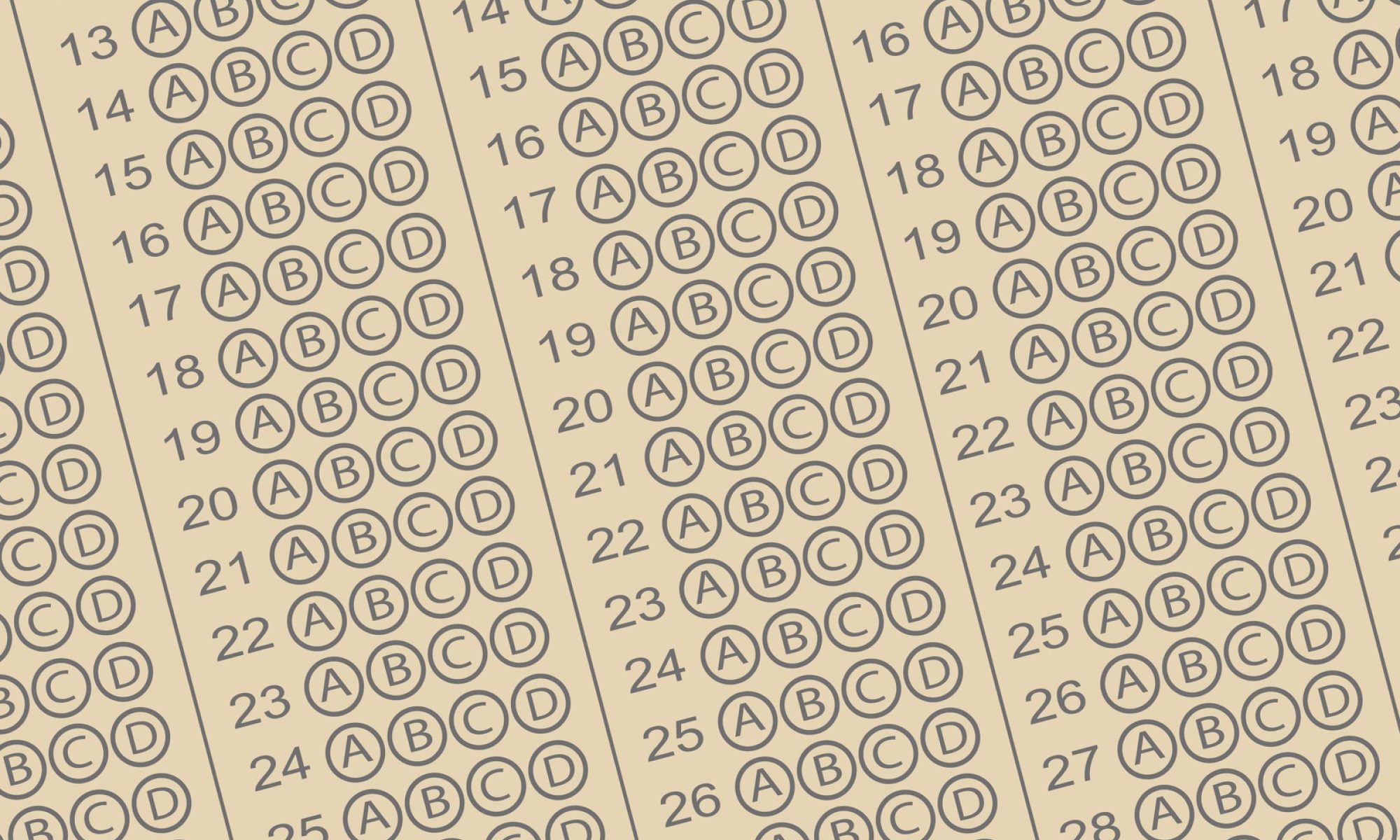In 2020, at the height of America’s pandemic-fueled racial reckoning, numerous colleges and universities dropped standardized tests as an admission requirement. No mere PR move, such action was supported by influential anti-racist activists such as Ibrahim Kendi, who declared, “Standardized tests have become the most effective weapon ever devised to objectively degrade Black and Brown minds and legally exclude their bodies from prestigious schools.” Racial gaps in SAT scores persist to the present. Yet, in the past several weeks multiple prominent universities, including Brown, Dartmouth, Yale, and UT Austin, have reinstated standardized testing as an admission requirement. Their reasoning — combating inequality.
The schools argue that careful use of standardized testing, in concert with other factors, can help to identify promising applicants who would otherwise be overlooked. Recent research has also affirmed that standardized test scores are predictive of performance, especially at highly selective universities. Moreover, standardized tests seem to be less biased than other more impressionistic aspects of the college admissions process like letters of recommendations and essays.
But all this does not necessarily vindicate the SAT. It can still be biased, even if less biased. And one can still find standardized testing too narrow an evaluative tool, even if acknowledging that more holistic methods or lottery-based approaches to admission have their own problems. However, the saga also reveals the very different ways we choose to measure and explain “inequality” in the first place.
One approach is to focus on discrimination. If one is committed to the belief that racial disparities are generally caused by discrimination, then the racial gap in test scores becomes evidence of that discrimination, and the tests emerge as the problem. Standardized testing reflects societal biases.
But racial inequality in America isn’t merely a matter of differential treatment; it is also a product of differential resources. Home ownership rates, family income, wealth, school funding, exposure to environmental toxins – all vary by race. If we believe these structural features impact standardized testing (and we should), our perception shifts from focusing exclusively on discrimination to a wider view of how resource inequality also shapes the picture. What follows from this shift in focus?
First, it requires us to admit the racial and socioeconomic achievement gap as measured by standardized tests at least partly reflects a real gap in the abilities those tests measure. This certainly does not imply these gaps are innate, nor that discrimination is not real, nor that standardized tests are the best measure of societal value. The concern is that by the time someone is taking the SAT at 16, harms from poverty, deprivation, and inequality have already accrued. Some of these harms, such as a lack of access to nutritional food or a lack of knowledge about test taking, can be addressed fairly easily. Other harms, for example exposure to allergens or environmental toxins, such as lead due to substandard housing, may cause lifelong negative effects.
It might be objected that while the gap in abilities measured by standardized tests is real, the abilities themselves are rather artificial — that these tests measure test taking and nothing more. Historically, the SAT stood for Scholastic Aptitude Test, with the implication it measured something like innate potential. In the 90s, it was rebranded to replace Aptitude with Assessment (it is now simply SAT). The question of what precisely standardized tests are measuring is complicated and controversial. However, the fear from a resource inequality perspective is that if differences are truly deep and structural with far reaching implications, then we should expect to find these differences emerge across many kinds of evaluation. This is a statistical claim about the overall effect of inequality. It does not imply that childhood environment is destiny or that there cannot also be benefits, to mentality, insight, or what have you, from a less privileged upbringing.
Second, resource inequality highlights a tension between two different missions of education. On the one hand, higher education, especially elite education, is a means of meritocratic selection, picking out those currently succeeding in K-12 American educational institutions and providing them additional opportunities and resources. On the other hand, education is a means of social uplift, by which people can allegedly transcend difficult circumstances and build a better life for themselves. But what if meritocratic means of selection themselves reflect and reinforce difficult circumstances? In fact, if resource inequality is causing a real effect, then we should expect a standardized test – even one with no discrimination whatsoever – to perfectly recapitulate an unequal society. If education is to be ameliorative of inequality, then institutions of higher education must accept different ability (at least at the time of evaluation) even on a fair test. Although, as previously discussed in The Prindle Post, this does not mean that these students are unqualified.
Finally, moving beyond discrimination to unequal resources challenges our understanding of societal change. If we believe the racial achievement gap to reflect discriminatory testing practices, then the natural solution is to change (or eliminate) the test. Better yet is to eliminate the prejudices behind the discrimination through educating ourselves and each other. But what if the racial achievement gap reflects instead the distribution of resources across society? What if people’s starting place is the most significant factor in determining SAT performance? The solution becomes far more ponderous. It may be rebutted that resource inequalities are still ultimately the result of discrimination, merely past discrimination, but this misses the point. For regardless of how we characterize the ultimate historical causes, correcting present discrimination will not automatically address the enduring impacts of the past. Of course, discrimination and material resources interact in complex ways: a lack of resources can lead to differential treatment, and differential treatment to a lack of resources. A natural hypothesis is that challenges for minorities which are redistributed by birth every generation (e.g., women and LGBTQ+ individuals) – and therefore don’t accumulate material disadvantage the way racial minorities can – may be better addressed by tackling discrimination and ideology, whereas resource inequality may require more redistributive solutions. As for the SAT, even if judicious use is an improvement to college admissions without standardized testing, we should not expect it to overcome the limitations of an unequal society.


